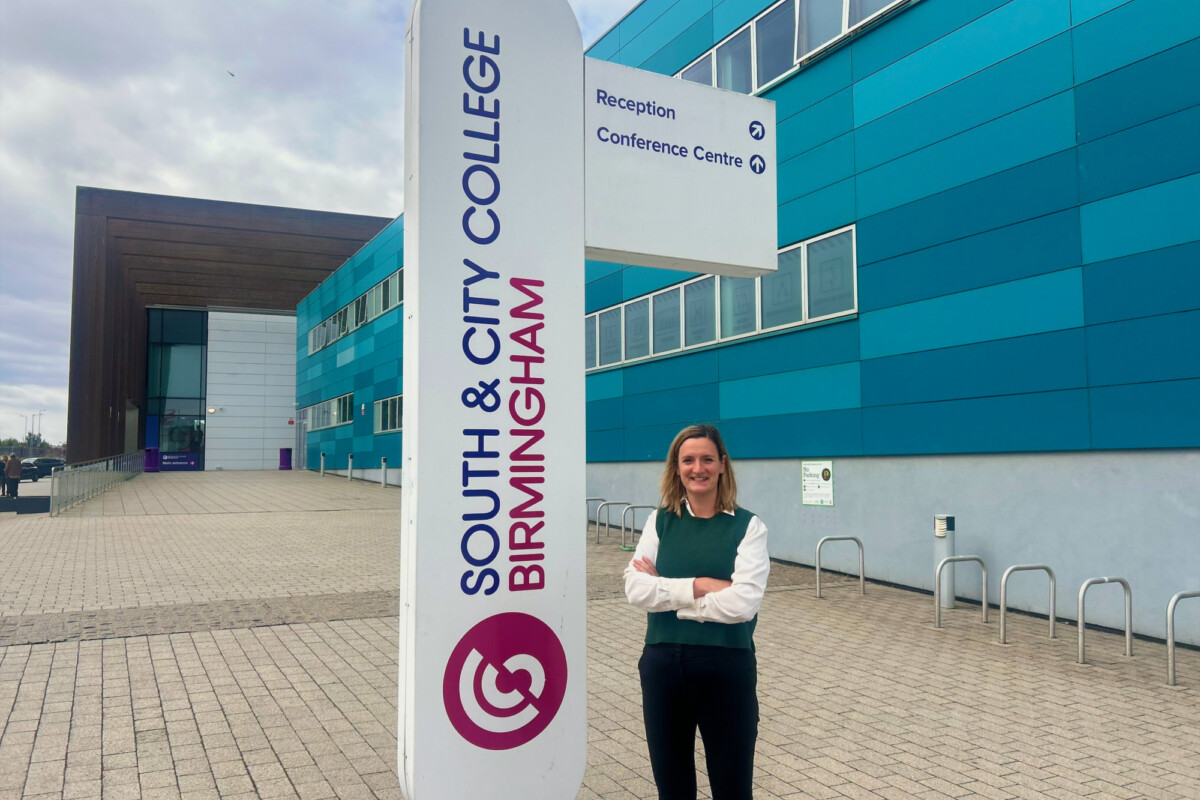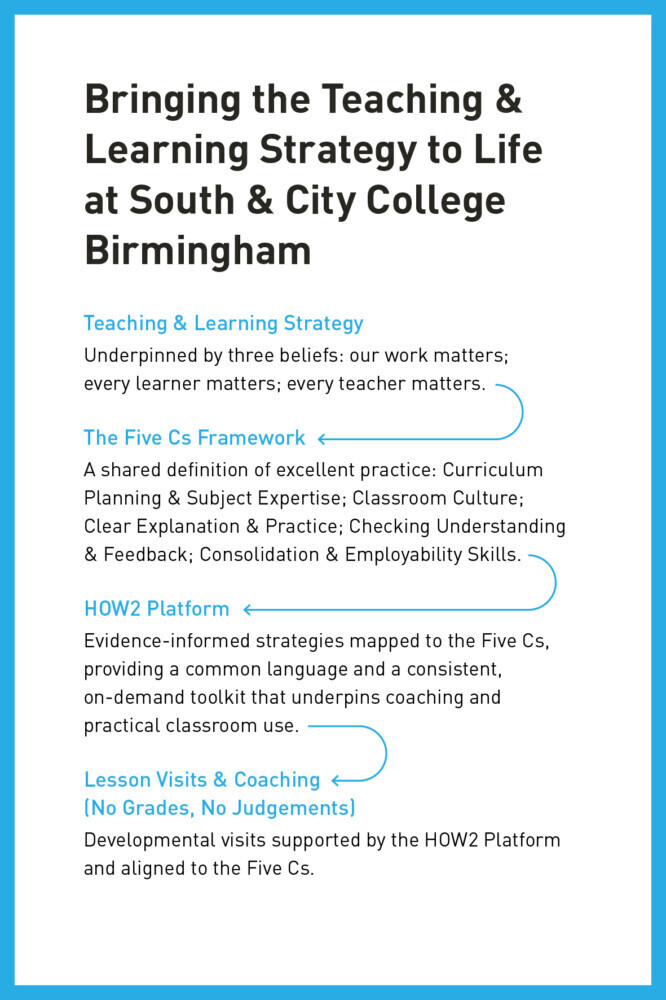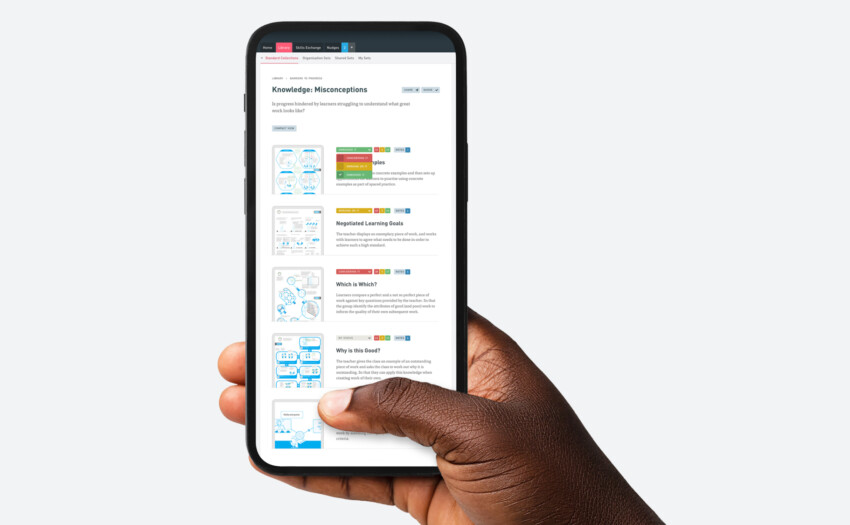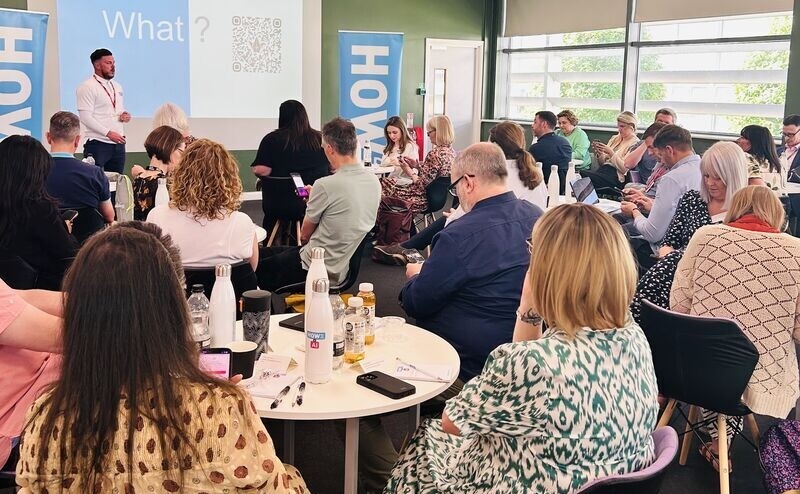No Grades, No Judgements: The CPD Model That’s Changing Our Culture
By Sinead Martin, Deputy Director of Quality and Teacher Innovation, South and City College Birmingham

When I joined South and City College Birmingham (SCCB) in December 2023, Kam Nandra — our Vice Principal for Curriculum and Quality — told me, “You’re about to join a little tornado.” And he was right.
Just a few months later, in March 2024, the college was rated Requires Improvement by Ofsted. It was a fair judgement. We had a lot of really committed, motivated, hardworking teachers — but student achievement wasn’t where it needed to be.
When I started unpicking things from a teaching and learning perspective, it quickly became clear that we didn’t have a strong, coherent strategy — or enough focus on teacher development and CPD. We didn’t have a shared language to talk about teaching as a professional craft, and we hadn’t defined what great practice looked like across the college. Those early days were difficult, but even then, we were clear we wanted to be the best at what we did. We were striving for that from the very start, and setting out a coherent strategy to define and develop great practice became my first priority.
Around that time, I met with Ranjit Singh, who had used the HOW2 Platform to lead a turnaround at Hull College. I already knew we needed a toolkit to create a shared language around teaching and learning, but I hadn’t yet found the right one. I looked at a number of options and seriously considered a few well-known tools. But when I came across HOW2, it stood out.
It wasn’t just the 200+ teaching strategies that appealed — it was how the platform supported genuine teacher engagement. Teachers could share what they’d tried, reflect together on what worked (and what didn’t), and learn from one another. That kind of collaboration was something we really wanted to foster. From a systems point of view, the accountability it offered was also important — I could see who was logging in, how often, and what they were exploring, which is so helpful when you’re trying to measure impact.
I always try to manage both hearts and minds, and HOW2 helped us do that. Crucially, it gave us the shared language around teaching and learning that we were missing. The strategy came first — but HOW2 became the tool that helped us operationalise it.
It became our go-to toolkit for the professional craft of teaching — something concrete and consistent that teachers across campuses could build on. It offered techniques that were immediately applicable and accessible to every teacher. For the first time, we had a consistent yet customisable way to support great teaching at scale.
Developing a Teaching and Learning Framework and Strategy
When I wrote our Teaching and Learning Strategy, I grounded it in three core beliefs: our work matters, every learner matters, and every teacher matters. I had two bold aims in mind: to be a beacon of exceptional teaching and learning, and to create a life-changing student experience.
That first aim led to the development of our Teaching and Learning Framework (TLF), which defines five shared components of excellent practice — what we call the five Cs: curriculum planning and subject expertise, classroom culture, clear explanation and practice, checking for understanding and feedback, and consolidation and employability skills.

The real turning point came when I realised we could use the HOW2 Platform to bring this framework to life. No other CPD tool we explored offered the flexibility to organise professional learning in a way that directly mapped onto our strategic framework.
With HOW2, we were able to group evidence-informed strategies under each of the five Cs. That meant we could move from abstract conversations about pedagogy to focused, practical discussions using a shared language.
A Coaching Culture Teachers Believe In
Another challenge I faced was that we didn’t have any way of understanding what teaching and learning looked like in practice, as there were no lesson visits in place. People would ask, “What is teaching and learning like at South and City?” And I had to say, “I don’t know — I haven’t been able to get into classrooms.”
As part of our wider CPD approach, we introduced a completely non-traditional model of lesson visits — no grading, no judgements, and entirely focused on development. We wanted to normalise professional conversations about what works — and what doesn’t. That meant creating a space where teachers could be honest, curious, and collaborative, without fear of being judged.
We trained a team of licensed reviewers in the five Cs and HOW2, so they could engage in focused, professional conversations with staff after each visit.
We based our coaching model on Jim Knight’s Impact Cycle, which encourages teachers to identify an area for improvement, learn about it, and apply it in practice. HOW2 supported this beautifully. It gave teachers access to clear, practical strategies they could explore and adapt in their own way.
The link between lesson visits and the HOW2 Platform has been especially valuable. Both are structured around our Five Cs framework, ensuring that feedback is aligned with our broader teaching and learning goals.
One feature on the HOW2 Platform that we’ve used consistently is the Nudge — a gentle, follow-up suggestion that helps keep the coaching relationship active and the professional dialogue going beyond the visit. Because each Nudge prompts specific HOW2 techniques based on feedback from the lesson visit, it’s directly tied to our Five Cs framework. This makes the follow-up purposeful and practical — encouraging staff to engage with the platform in a way that feels relevant and respectful. As a result, platform usage has grown naturally — because the model makes sense and supports teachers, rather than judging them.
Our philosophy is rooted in something Dylan Wiliam said: “Every teacher needs to improve, not because they’re not good enough, but because they can be even better.” That idea runs through everything we’ve done. It’s about building a culture of continuous improvement — outside of draconian performance management systems. I want teachers to feel inspired to grow because they believe in it. As I told staff early on: the best athletes in the world have a coach — not because they’re not good enough, but because they deserve support. So do our teachers.

A Transparent Rollout
When we launched the teaching and learning strategy, we did it alongside HOW2. This wasn’t just about a new platform — it was about a new mindset. Our focus was on professional growth and a shared understanding of great teaching. We kicked things off with a CPD day where Damian Rollinson Small from HOW2 joined us to demonstrate how the platform could support that vision.
I visited every campus to explain what we were doing and why, giving staff a chance to ask questions in open, informal sessions. We know how hard teachers work — and how nerve-wracking it can be to have someone in your classroom. So we made one thing clear: this isn’t about catching people out. It’s about growth.
HOW2 at the Heart of CPD
Since launch, we’ve worked hard to make sure HOW2 isn’t just a bolt-on. It’s embedded in everything we do. Every CPD session our teaching and learning coaches deliver includes at least two HOW2 strategies. We don’t just talk about them — we model them. Teachers become the students for a bit — because modelling works. People need to see it in action.
These sessions happen every six weeks or so and are tailored to what teams need. We use the data from our lesson visits to identify themes, then build CPD around that. And when teachers leave, they’re sent a Nudge with the strategies we used — so they can pick them up again in their own time.
Champions in Every Corner
To support the strategy at scale, we trained a team of around 20 HOW2 Champions across the college. They work with staff in small groups, answering questions and showing how to make the most of the platform. It’s this kind of peer support — not big launches or all-staff emails — that really drives uptake and behaviour change.
Listening to What Matters
The Barriers to Progress (BtoP) assessment tool on the HOW2 Platform has given us a whole new layer of insight into what our teachers are really thinking about — and what they feel would help them improve. It surfaced things we simply weren’t picking up through lesson visits or even Ofsted. One standout example was classroom disruption: it hadn’t appeared as a theme anywhere else, but came through clearly in the BtoP data. That kind of insight is gold. It helped us design targeted, behaviour-focused CPD and build professional learning communities around what teachers actually need. As a manager, having access to that kind of honest, anonymous feedback is invaluable — and it’s helped us steer our support in much smarter ways.
A Shift in Culture, Built on Trust
It’s still early days for us at South and City College Birmingham, but we’re already seeing clear signs of progress. Culturally, CPD is gaining a raised profile.
We’re talking about teaching and learning far more — and HOW2 has given us a way to do that using a shared language. Before, we didn’t have that. Now, we’re starting from the same place.
One of the most noticeable shifts is that teachers feel genuinely valued — because they can see we’re actively investing in their development. That’s helped build trust and deepen engagement with CPD. There’s now a real sense that professional learning is something we do together, not something done to you.
We’ve also seen teachers come to the surface who we hadn’t realised were so engaged in their pedagogy. HOW2 has given them a platform to shine, and we’ve made a point of celebrating that. We recently held a lunch for our “HOW2 Champions” — those who’ve gone above and beyond in exploring and sharing strategies. Their voices are now being heard across the college, and that growing engagement is showing up in the data too.
On our most recent CPD day — shaped by insights from lesson visits and HOW2 usage — 84% of staff said they found it useful and planned to implement the techniques. Several teachers shared positive feedback, including one who told me a simple strategy — using mini whiteboards — had already made a big impact.
From a quality assurance perspective, we’re moving in the right direction. We had a positive Ofsted monitoring visit in March and were judged to be making reasonable progress. Inspectors said they were happy with what we’re doing — and that meant a lot.
Predicted achievement is rising too. In 2024 – 25, we were the most improved college in the country. And this year, teachers are predicting that outcomes will improve again. The momentum is real — and so is the belief.
-
To learn more about the HOW2 Platform, follow TeachingHOW2s on LinkedIn for updates and insights.
Resource
Resource
SCCB’s Five Cs






